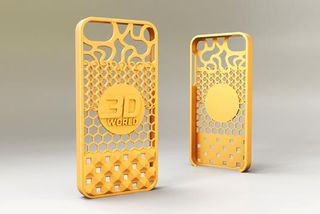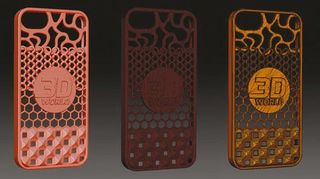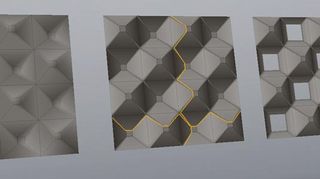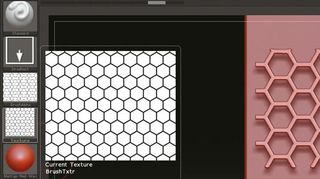Is your IP at risk from 3D printing sites?
Protect your designs from being stolen by filesharing 3D printing sites. Patent attorney Richard Worthington explains how.

The use of 3D printing has been growing rapidly in recent years. Businesses in the high-value manufacturing sector, particularly those with a strong aftermarket, were among the early users of 'stereolithography', a form of 3D layering and printing technology developed in the 1980s for the purposes of rapid prototyping.
Win clients & work smarter with our FREE ebook: get it now!
Continued development of the technology has led to the possibility of more wide-ranging uses for the manufacturing technique in production parts. New metallic 3D printing technologies, in particular, are opening the door to some exciting possibilities for manufacturers to produce complex parts for aircraft, cars or other high-end machinery more quickly.
However, for some original equipment manufacturers (OEMs) and tier one suppliers, the rapid take up of 3D printing technologies may represent a threat, particularly for businesses that have not maintained or extended their IP protection.
Silent theft

3D printing technologies have made it possible for agile suppliers to produce replica parts based on imported CAD files – turning them out quickly and potentially making them available at a competitive cost. Patent protection alone may not be sufficient to prevent such activity and in some cases OEMs may not even be aware it is happening.
In this environment of uncertainty, OEMs and tier one manufacturers may need to extend their intellectual property rights protection to include registered design rights protection for their industrial designs where possible.
They should also monitor file-sharing websites to ensure any CAD files they own are not being shared inappropriately and be prepared to bring enforcement action to block this activity if necessary.
Get the Creative Bloq Newsletter
Daily design news, reviews, how-tos and more, as picked by the editors.
Protecting your rights

Registered design rights can be used to protect the shape and appearance of an industrial design. In Europe, this can give the owner an exclusive right to use the design and prevent a third party from using it without their permission for up to 25 years.
Some industrial designs may not be eligible for European registered design rights protection – specifically designs that are purely technical in nature or those that apply to a feature that simply allows a product to fit together. However, it may be that such design features are protectable in another way, such as by a patent. A qualified patent attorney will be able to advise which type or types of IP protection are required to properly protect a revenue stream.
Another important consideration for manufacturers is the issue of who owns the intellectual property rights, particularly in cases where detailed design work is out-sourced within the supply chain. This matter should be decided early in the procurement process. Again, specialist patent attorney advice will be valuable.
Ring-fenced designs

By doing everything possible to protect their industrial designs, manufacturers and tier one suppliers will be able to ring-fence their commercial interests and open up potential commercial opportunities to licence their designs to other manufacturers in the future.
OEMs, suppliers or end users that might be considering sourcing spares from alternative 3D printers in the future – as part of a cost reduction strategy perhaps – need to be aware of the potential risks.
Not only could such suppliers attract litigation if they are infringing a third party's intellectual property rights, the products they supply may also not meet industry-specific compliance requirements.
The benefits of 3D printing are here to stay and manufacturers need to adapt their intellectual property strategies now to protect their commercial interests. In doing so, they will also be better placed to monetise their innovation as and when new market opportunities arise.
Words: Richard Worthington
Richard Worthington is a patent attorney & senior associate at Withers & Rogers.
3D printing and the law: special report

Discover more about 3D printing and the law in the forthcoming issue of 3D World magazine, on sale this Wednesday 25 March.
In a special, six-page report the 3D World team examine the perils of copyright law in 3d printing, important legal terms you need to know, where to get help and advice, and more.
Never miss a copy of 3D World: buy a subscription today!

Thank you for reading 5 articles this month* Join now for unlimited access
Enjoy your first month for just £1 / $1 / €1
*Read 5 free articles per month without a subscription

Join now for unlimited access
Try first month for just £1 / $1 / €1
The Creative Bloq team is made up of a group of design fans, and has changed and evolved since Creative Bloq began back in 2012. The current website team consists of eight full-time members of staff: Editor Georgia Coggan, Deputy Editor Rosie Hilder, Ecommerce Editor Beren Neale, Senior News Editor Daniel Piper, Editor, Digital Art and 3D Ian Dean, Tech Reviews Editor Erlingur Einarsson, Ecommerce Writer Beth Nicholls and Staff Writer Natalie Fear, as well as a roster of freelancers from around the world. The ImagineFX magazine team also pitch in, ensuring that content from leading digital art publication ImagineFX is represented on Creative Bloq.
